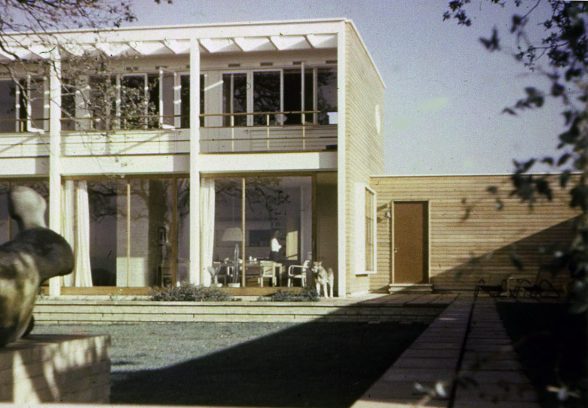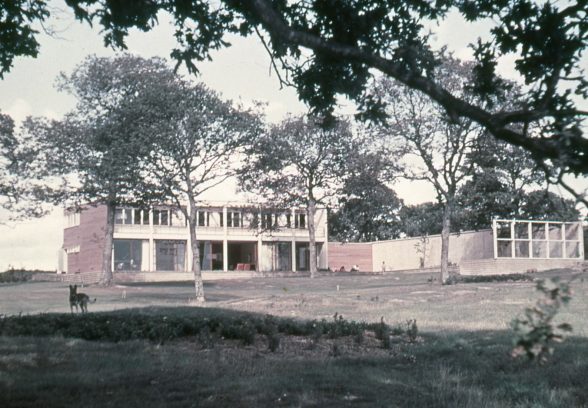This website uses cookies
This website uses cookies to enable it to function properly and to analyse how the website is used. Please click 'Close' to accept and continue using the website.




We are delighted to learn that one of the finest Modern Movement buildings in the UK, Serge Chermayeff’s Bentley Wood house in Sussex, is being considered for listing by Historic England.
This comes at a time when the house is just about to change ownership and 17 years after we put in a listing application ourselves.
C20 Society Caseworker Grace Etherington commented: “It has suffered badly over the years from some large extensions, window replacement and the ill-judged enclosure of the first floor balcony but the main structure and interior plan form is still intact. A listing designation will help guide the new owners in the right direction in the care and restoration of what is one of the most influential modern houses of the period.”
Designed in 1936, the same year Russian émigré Chermayeff completed the De La Warr Pavilion in Bexhill (now Grade I listed) with Erich Mendelsohn, Bentley Wood was completed in 1938. Set in approximately 18 acres of land with views over fields towards the South Downs it was Chermayeff’s own home and was hailed as ‘a regular Rolls-Royce of a house’, (Charles Reilly, Architects Journal 28.9.38). With its sculpture and paintings (Moore, Nicholson, Piper), and its extensive grounds (on which Chermayeff collaborated with Christopher Tunnard), it fused architecture, art and landscape into a memorable whole.
It is built of timber, both as structure and cladding, to reflect the vernacular surroundings but embracing the recent acceptance of the material’s suitability for modern architecture. Contemporary architects using timber in the modern idiom in England were Walter Gropius, Maxwell Fry and the lesser known Anthony Chitty, a member of Tecton. Chermayeff received many important visitors at Bentley Wood, including Frank Lloyd Wright during his first visit to England in 1939, and Erno Goldfinger, who adopted the house’s basic modular unit of 2ft 9ins in his own later designs.
Alan Powers, former Chairman of C20 Society, who wrote a monograph on Chermayeff published by the RIBA, said of the house: ‘It remained fresh in the minds of architects even in the 1950s, when most other pre-war Modern houses seemed impossibly dated.’
Bentley Wood proved to be the demise of Chermayeff’s career in England, as the costs of the house made him bankrupt. He sold it shortly after moving in, and left England for America.
Chermayeff had commissioned Henry Moore to create a sculpture for the grounds of Bentley Wood. The resulting artwork was Recumbent Figure (1938) in Green Horton stone which appears in old photographs, viewed from the deep box frame of the dining room window. Recumbent Figure did not remain at Bentley Wood for long. Although he had agreed a purchase price of £300 for the sculpture, he had only paid a £50 deposit. Because of his financial circumstances he proposed that the work be returned to Moore to sell to another client. Moore willingly took possession of the sculpture again and refunded the deposit. It now resides at Tate Britain.

Become a C20 member today and help save our modern design heritage.